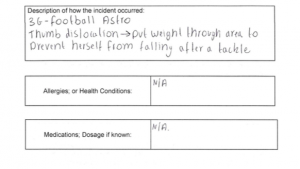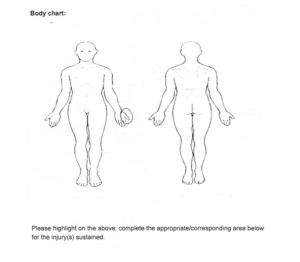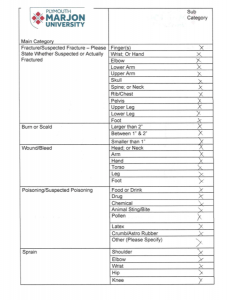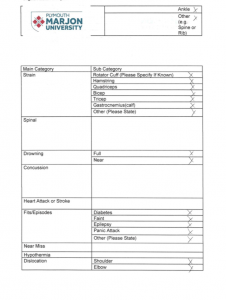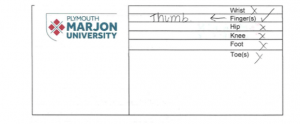During the 3 hours, I provided pre-game treatment and acted as the first aider if something was to arise during the match, that needed to be dealt with. There were no life-threatening incidences but two of the girls from the opposition both sustained injuries and needed treatment.
| Reflective Summary
As part of pre-game treatment, I k taped one of the players shoulders as she had a previous glenohumeral dislocation, therefore there is instability around the shoulder. The first incident that occurred during the game was a player from the opposition heard a pop in their knee as they changed direction. After running over to her, we briefly asked the athlete what the mechanism of injury was, the intensity of the pain and tested ROM (range of movement) at the knee. There was little pain during ROM and the intensity was low. She was able to weight bear but running was both painful and uncomfortable. We advised her to stop playing as any knock or change in direction could cause the same thing to happen, if not worse, as there was now a weakness at the knee. We gave her some ice to apply in order to help with the pain. Another player from the away team dislocated their thumb as she put weight through this hand, to prevent herself from falling over during a tackle (see appendix). As we approached her on pitch side, we recognised that she was feeling faint so we got her to sit down, encouraged her to drink and to not look at the dislocated thumb. Once she had stop feeling faint we were able to remove her from pitch side. The player did not want to put the thumb back into the socket herself, as she had broken it before. This meant that there was a weakness there and the fact that she hasn’t completed any of her thumb rehabilitation meant that the strength of the muscles had not improved. We advised her to go to A&E as soon as possible, in order to prevent it from swelling, making it harder to put back in place. In the mean time we gave her some ice to help with the swelling and tissue healing process. Finally, a player from the home team had a bleeding lip where the mechanism was unknown. There was quite a lot of blood present, so we asked the player to bit down on a nasal sponge, so that compression was applied to the area. After a few minutes the bleeding had stopped and the player was able to continue in the game. Areas for further improvement My first area for further improvement would be to revise the special tests, analysing the specificity and sensitivity. This is useful because instead of using all the tests for a particular joint, I can select the ones that are found to be the most effective in the literature, based on research. Another area for improvement would be to ensure that the kit bags are checked prior to the matches, ensuring all the appropriate equipment and enough of it is in the bags, in case it needs to be used. As I do not have my own physio bag, I sometimes find it hard to know exactly where all the equipment will be in the bag. I would consider buying myself a bag if I was interested in a career in pitch side management. Things to remember
Appendix Accident Report Form:
|

